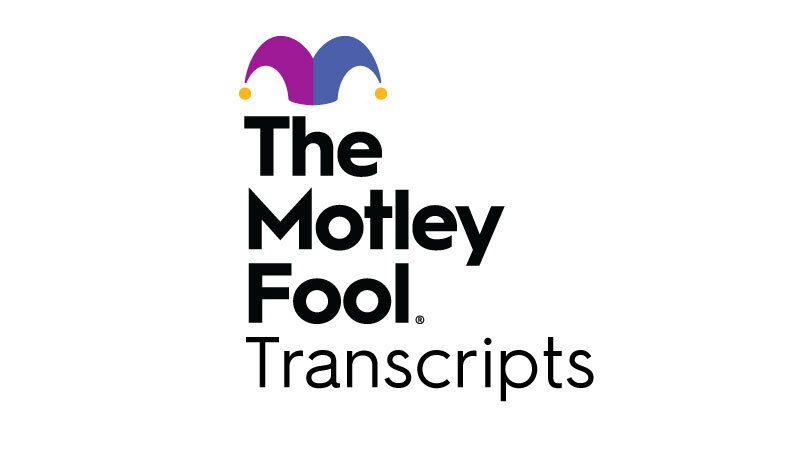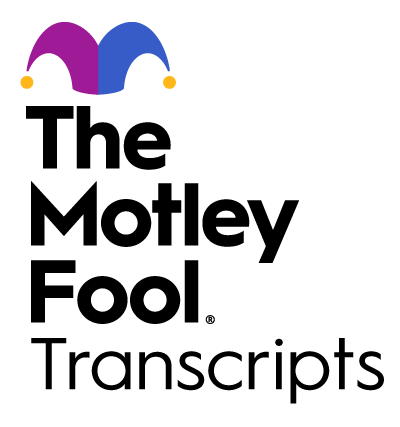

Image source: The Motley Fool.
Zions Bancorp NA (NASDAQ:ZION)
Q3 2021 Earnings Call
Oct 18, 2021, 5:30 p.m. ET
Contents:
- Prepared Remarks
- Questions and Answers
- Call Participants
Prepared Remarks:
Operator
Ladies and gentlemen, thank you for standing by, and welcome to the Zions Bancorporation’s Third Quarter 2021 Earnings Results Webcast. [Operator Instructions] Please be advised that today’s conference is being recorded. [Operator Instructions]
I would now like to turn the conference over to your host, Mr. James Abbott. You may begin.
James R. Abbott — Senior Vice President, Investor Relations and External Communications
Thank you, Towanda, and good evening, everyone. We welcome you to this conference call to discuss our 2021 third quarter earnings. I would like to remind you that during this call, we will be making forward-looking statements, although actual results may differ materially. We encourage you to review the disclaimer in the press release or the slide deck on slide 2 dealing with forward-looking information and the presentation of non-GAAP measures, which apply equally to statements made during this call. A copy of the earnings release as well as the slide deck are available at zionsbancoporation.com.
For our agenda today, Chairman and Chief Executive Officer Harris Simmons will provide operating remarks — opening remarks, followed by comments from Scott McLean, our President and Chief Operating Officer. Paul Burdiss, our Chief Financial Officer, will conclude by providing additional detail on Zions’ financial condition. With us also today are Keith Maio, our Chief Risk Officer; and Michael Morris, our Chief Credit Officer. We intend to limit the length of this call to one hour. During the question-and-answer section of the call, we request that you limit your questions to one primary and one follow-up question to enable other participants to ask questions.
With that, I will turn the time over to Harris.
Harris H. Simmons — Chairman and Chief Executive Officer
Thanks very much, James. We want to welcome all of you to our call. Beginning on slide 3, the themes that are particularly applicable to Zions’ most recently as well as — we believe in the near term horizon are listed here. We are seeing continued strong deposit growth continued in the third quarter has positioned Zions well relative to many of our peers to be able to invest in securities that offer promotions on loan products to core customer segments. Secondly for more than a decade, we worked to position the company to perform very well during an economic downturn. We’re really pleased with the result, what you see in our credit outcomes again this quarter.
Third, we, along with most in the industry have experienced net attrition of loan balances excluding PPP loans. But over the last quarter, we started to see some new commercial loan growth and our strong deposit growth enabled us again to launch some promotional campaigns in June that have resulted in favorable initial results. These customers are coming from other banks and we’ve also seen new demand from existing customers. All of it is accretive to net interest income relative to leaving the liquidity and money market accounts and all of this is helpful to our goal of generating positive operating leverage.
We’re well positioned for rising interest rates, which is helped by strong deposit growth but also reflects the careful deployment of liquidity during earlier, more uncertain points in time. As the outlook becomes more certain we have begun to deploy the liquidity into higher yielding assets. The final item on this slide refers to our ongoing significant investment in technology, which is designed to enable Zions to remain very competitive in the future both relative to the largest U.S. banks, the fintechs and to well-established community banks.
Turning to slide 4, we are pleased with the results on most fronts. Our campaigns on owner occupied commercial loans, as well as consumer home equity lines of credit resulted in strong growth in both categories, each increasing at an annualized rate exceeding 10% relative to the prior quarter. Excluding PPP loans, our period end loans and total increased an annualized 5.6%. Deposit growth remained very strong, up an annualized 9.3%, moderately outpacing the growth in the industry, which includes all domestic commercial banks. Over the prior year, deposit growth was 16% which compares to the industry’s rate of 12%.
It is particularly notable that credit quality continued to improve again, reporting net loan recoveries in a nearly 30% decline and special mention loans from the prior quarter. These, along with other factors led to a further release of loan loss reserves. We indicated last quarter that we would continue to increase the size of the securities portfolio at a rate greater than what we did in 2020. And in the third quarter, we increased the size of the securities portfolio by nearly $2.3 billion or 12% and that’s not annualized. That’s relative to the prior quarter. Diluted earnings per share decreased to a $1.45 per share from $2.08 from the prior quarter.
There were two primary factors that accounted for the decline, the change in the provision expense and the change in the gains and losses on securities. Combined, those two contributed about $0.76 per share less than the third quarters compared to the second. One way we and perhaps some of you look at our earnings is to look at adjusted pre-provision net revenue, which excludes securities gains and losses and subtracting from that actual net charge offs. On that basis, it was unchanged relative to the prior quarter of $290 million. Turning to slide 5, at the top left is a chart of our recent earnings per share results.
The chart on the bottom left shows the per share amount for the provision for credit losses during that same period. The provisions defect on earnings per share was quite variable throughout the pandemic and is a major factor in the linked quarter decline in earnings per share. On the right side are some notable items that may be of interest. As previously noted, unrealized losses from securities, less the partial offset from a reduced success fee accrual to the SBIC fund manager equaled $0.12 per share as compared to unrealized gains of $0.25 per share in the prior quarter. Most of the recent gains and losses on securities are attributable to an investment in small business investment company fund.
One of the company’s within the fund successfully completed an IPO in April, which we described in our first quarter 10-Q with a strong unrealized gain in the second quarter followed by a partial retracement in the third quarter. On slide 6, we highlight the balance sheet profitability metrics. The healthy results were attributable to items that I’ve previously described. As previously noted, another significant highlight for the quarter was the credit quality of the loan portfolio as illustrated on slide 7. Relative to the prior quarter, we saw a further improvement in problem loans. Using the broadest definition of problem loans, criticized and classified loans dropped more than 17%.
Although not shown relative to the prior quarter, special mentioned loans declined at 29% and classified loans declined 10%. Many of you have seen our slide in the past showing our average net charge-off ratio relative to average non-performing assets plus 90 — plus days past due loans, which is an indicator of loss severity. And shown in this metric relative to our peers can be seen in the appendix. During the five years ending 2020, our average annual loss severity was 15%, while the peer median was 32%. Over the last 12 months, that ratio for Zions is just 6%. We experienced net credit recoveries on loans, which was also true of the prior quarter.
Perhaps one of the more interesting credit measures to highlight this quarter is that gross charge-offs were very low, $8 million or just 7 basis points and annualized of average non-PPP loans. Shown in the chart on the bottom right, one can see the volatility of the provision contrasted with the relative stability of net charge-offs. This is mostly the result of changing economic forecasts. Our capital position is depicted on slide 8. We increased our share buyback to $325 million in the third quarter and have indicated that ultimately, we expect a target of common equity Tier 1 ratio at a level moderately above the peer median. We expect to announce any capital actions for the fourth quarter in conjunction with our regularly scheduled board meeting this coming Friday.
Next, Scott McLean, our President and Chief Operating Officer, is going to provide an update on the PPP program and our technology initiatives. Scott?
Scott J. McLean — President and Chief Operating Officer
Thank you, Harris. Turning to slide 9, our third quarter adjusted pre-provision net revenue was $290 million net of the effects of the previously noted IPO. The PPNR bars is split into two portions, the bottom portion represents what we think of as generally recurring income while the top portion denotes the PPNR we’ve received from PPP loans. During the course of the Paycheck Protection Program, our performance of producing on a relative basis three times more than the industry average, will result in approximately $460 million in additional income to the company, which represents capital that ultimately benefits all shareholders.
To be specific, PPP-related revenue has equaled $380 million, and there remains $83 million in capitalized income net of origination costs that will be recognized over time. Although PPP-related revenue will decline, we’re enthusiastic about the longer-term benefit of adding approximately 20,000 small business customers and strengthening relationships with 57,000 existing customers. Turning to slide 10 reflects some of the highlights from our times performance that I noted earlier. Regarding forgiveness, we’ve received $7.9 billion of applications or nearly 80% of the total volume.
$6.7 billion has been approved for forgiveness by the SBA, and $3.1 billion of PPP loans remain on our balance sheet at quarter-end. Turning to slide 11, this slide illustrates the longer-term benefit of this activity. Specifically, as a result of our outreach, we see growing relationships with many of the 77,000 PPP participating customers. These customers collectively have contributed approximately $6 billion of our deposit growth, and new non-PPP loan balances exceed $550 million to this collection of customers. More specifically, of the PPP 2020 vintage, the spring 2020 vintage, 14,000 new-to-bank customers, approximately 54% are now appear to be utilizing us as their primary — for their primary operating accounts.
This percentage as we’ve noted previously has been growing nicely each quarter, and we are seeing similar growth trends with the PPP 2021 vintage of 5,000 new-to-bank customers, which started earlier this year. Turning to slide 12, recall that in our investor presentations we provide a detailed slide of our major technology projects. Today, we want to just highlight two. Many of you may recall in April, FDIC Chair, Jelena McWilliams was quoted as saying that her number one concern for the banking industry was its reliance on aging core loan and deposit systems. So where do we stand on this topic? As of February 2019, you’ll recall that we completed the replacement of our three legacy core loan systems and now have virtually all of our loans on our new modern core.
In 2023, we expect to complete the final phase of our core modernization journey with a conversion from our legacy deposit systems to our new enterprise core system. To put this in perspective, a big core accounting firm recently reported that of the top 100 banks in the United States, 93 remain on one or more older first generation cores. Six are utilizing a modern core on only a portion of their loan and deposit…
